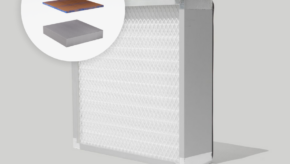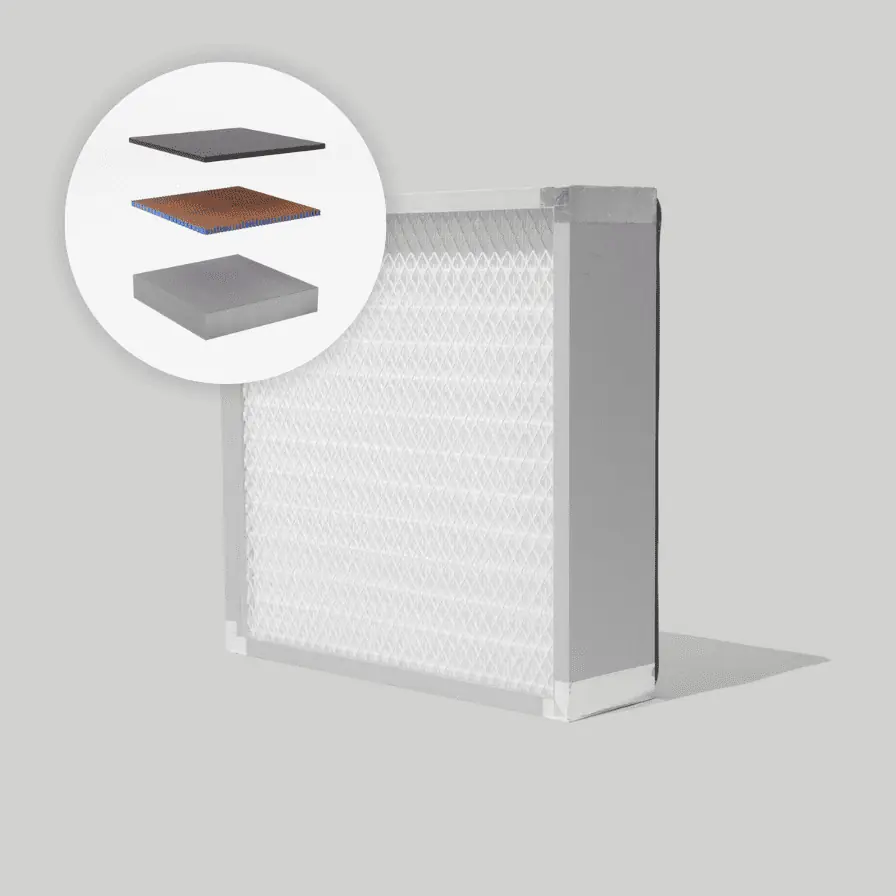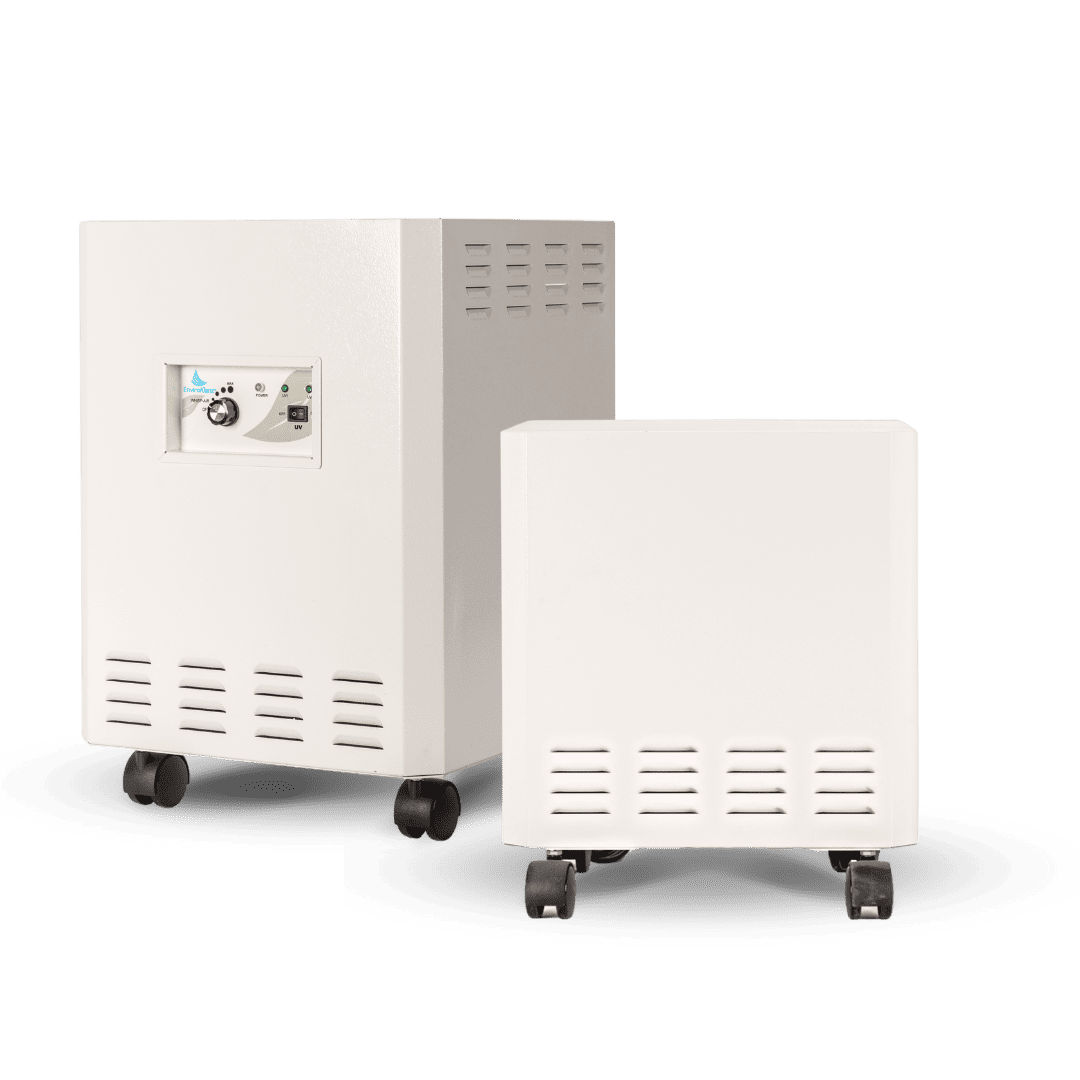Walking around your home you may have begun to notice that windows and mirrors in your home have that fresh steamed look to them, as they begin to fog up over time. Or maybe it’s the high moisture levels in the air or even a lack therefore of moisture that has your indoor air feeling like the Sahara Desert. No matter the case, if you begin to see or experience these different conditions inside your home the issue may reside within the humidity levels that are present in the indoor space of this personal environment.
Humidity levels inside of your home can play a major role in the overall conditions within this indoor environment and will have an impact on airborne pollutants that can be produced and/or emitted into the air of your “safe” home. Humidity vs relative humidity levels can be high or low, and both of these extreme levels can lead to certain repercussions to the indoor air quality. When it comes to measuring humidity levels in the home though, there are only a few devices that can provide you with an accurate reading of humidity levels in your indoor environment.
In this article we are going to learn more about humidity levels in a home, along with understanding the effects high/low humidity have on indoor air quality, and what can be used to measure humidity levels indoors.
Why is My House So Humid
When it comes to humidity levels everyone has their own personal preferences that are most comfortable to them. However, humidity plays a much more important role than just comfort to those occupants in the environment, it can also have a lasting impact on the overall conditions in this indoor space. According to standards of humidity levels, it is recommended to keep relative humidity around 50 percent year-round. When the humidity reaches above or below this ideal humidity level it can create an adverse feeling in the home environment and will actually lead to the development of pollutants into the air.
When it comes to detecting if your home is experiencing high or low humidity levels there will be many different noticeable factors throughout the environment that will be tell-tale signs. The buildup of condensation on the windows and mirrors may be a dead giveaway, as well as seeing peeling paint or hearing excessive creaking of the floors. Even the odor in your house can be a sign of humidity, if your house smell musty humid then it could be an indicator of bad humidity levels indoors. Conversely, when humidity is low in your home you may start to experience dry & itchy skin, have an increased susceptibility to colds and infections, and even noticeable damage to wood furniture and floors.
What is High Humidity
Humidity is the amount of water vapor present in the air that is expressed as a percentage of the amount needed for saturation at the same temperature. The ability of the air to hold water changes as the temperature in the environment rises and falls. The overall level of humidity can play a major role in the comfort level in an environment, and thus whether there is high humidity or low humidity it can have a large impact on the environment. High humidity, however, can mean potential issues for the health of those occupants exposed to this environment for long periods of time.
When humidity is high you may begin to experience problems with mold and even allergies over time. The high humidity levels indoors will also be an attractant for the growth of bacteria, viruses, fungi, mold, and mildew, and all of these pollutants can lead to an unhealthy indoor air quality. When these different microorganisms swirl inside your indoor air space in abundant levels it can further exacerbate symptoms for those individuals who suffer from allergies and/or asthma. And generally speaking, high humidity will overall just make the environment hot and uncomfortable, which will lead to large amounts of run time for you air conditioner system in the home.
Is Humidity Good?
When talking about humidity, whether that be indoors or outdoors, we generally associate it as something bad that can be threatening to the environment (specifically indoors) and even potentially to human health. Low levels of humidity indoors can lead to very dry air which increases the potential to catch airborne viruses like the flu, that are able to last longer in the dry air climate. In addition, low humidity will also impact skin conditions since the dry air can make your skin very dry, itchy, and irritated, and strike up other allergy and asthma symptoms, according to the National Asthma Organization.
As we mentioned previously, indoor humidity levels can also have an impact on contaminants like bacteria, mold, and dust mites – along with other airborne chemicals that can be pushed up into the air. The everyday building materials like carpeting and wood products in a home are composed of chemicals like formaldehyde and other VOCs (volatile organic compounds) and when the humidity is high it can lead to the releasing of these chemicals into the airspace of the indoor environment. This process that the chemicals undergo in the high humidity conditions is called “off-gassing” where the concentration of these noxious chemicals rise due to the reaction of chemicals with water vapor.
What Should Indoor Humidity be
The level of humidity in your home can vary, some home’s may have high levels of humidity some may have low levels of humidity, and it will all depend on the conditions found in this environment. When it comes to the specific humidity level that should be set in your home everyone will have their own personal preference, whether they like a little added humidity or like the humidity to be on the low side – and the climate in which you live in can heavily impact this decision. However, according to the CDC (Centers for Disease Control and Prevention), the standard range for humidity to be set to in an indoor environment should be anywhere between 30% to 50% and may differ throughout the different months of the year.
Humidity levels that read to be below 30% in a home are considered too dry, whereas if the humidity level reaches above 50% it is too high for the indoor air. A homeowner will be able to detect whether or not their home falls above or below these set humidity levels based on the conditions in the home or even the use of air quality devices that are specifically designed to measure humidity levels. Often times it is best to determine what the actual humidity levels are in your home so you can begin to craft a game plan to restore the humidity back to ideal levels.
What Causes High Humidity in a House
If you have determined that your home has elevated levels of humidity present in the indoor air the next thing you will need to learn is what could be the major causes in the home that are contributing to this high humidity. The high humidity levels in your home will wreak havoc on your home, your possessions, and even potentially your health in some cases. Thus, determining the root causes behind high humidity levels is extremely important to many aspects of your indoor environment.
Below we are going to discuss the top causes of high humidity in a home and how it can affect the overall humidity levels, according to State Farm.
- Showering: Taking a hot steamy shower will result in a buildup of condensation and water vapor in the air that eventually contributes to high humidity levels. In addition, the high levels of moisture present in the air can also increase the risks of mold development in the indoor environment of your home.
- Cooking: When you are cooking food you likely will have to boil water on the stovetop, thus producing humidity into the air. This is why often times it will get hot in the small space of the kitchen and why having the proper ventilation in this indoor area is important.
- Laundry: The laundry room is full of moisture and heat and this is what makes this room a contributor to high humidity in the home. The heat from the dryer mixed with the moisture used in the wash cycle will form an elevated level of humidity that will impact the indoor air quality.
- Bad Ventilation: Ventilation inside of a home is essential to the level of humidity that is present in this indoor space. In an indoor environment like a home, ventilation is responsible for aiding in the mitigation and removal of stagnant air and moisture. However, when the ventilation is poor in the home it can create major problems that will include high pollutant levels and high humidity.
- Renovations: Every once in a while, your home will have to undergo renovations to make improvements to the overall aesthetics and quality of the home. During this renovation process it can quickly turn into a high humidity problem when materials like plaster cement and paint have to dry.
How to Test Humidity
Determining if you have high or low humidity levels in your home, can be difficult to analyze and will often require the use of specific practices or technology to give an accurate depiction of the humidity levels. Among some of the more nontraditional methods to finding the humidity levels in a home, some people will place two or three ice cubes into a glass, add water, and stir – allowing three minutes for it to sit to see if moisture forms on the glass, if it does not then the air is too dry in your home. However, other humidity indicators that are a more reliable option to utilize is an air quality monitor that specifically work to monitor humidity levels.
The Airthings Wave Plus is the first battery-operated smart IAQ monitor with Radon detection, including sensors for temperature, air pressure, humidity, TVOCs, and CO2. This monitor has 6 sensors that include 3 of the most serious indoor air pollutants, as well as detailed views of temperature, air pressure, and humidity. The Airthings monitor offers a dashboard that includes quality interpretations of your IAQ with data alerts and advanced analytics.
How to Get Rid of Humidity in House
When it comes to getting rid of high humidity levels in a home there are a couple solutions to use to help in this indoor air quality effort. Firstly, you should run exhaust fans throughout the entire house to let out the odors and humidity that are trapped in the indoor air. Additionally, a dehumidifier will be a great go-to for kicking out high humidity levels. Dehumidifiers are portable air devices that can reduce and maintain the levels of humidity in the air. These affordable dehumidifiers will be one of the best tools to use in getting rid of high humidity problems.
As we discussed earlier, when humidity levels are high it can result in the off gassing of chemicals from building materials throughout the home. When this occurs, it can create a very volatile indoor environment that contains a lot of potential risks to human health. When comparing an air purifier vs humidifier, a humidifier does not have the capability to remove these chemical toxins from the air. Thus, having an air purifier like the EnviroKlenz Air Purifier to help remove these toxic chemical contaminants from the air will guard and protect your home’s indoor air quality. The EnviroKlenz Air Purifier contains a two-stage filtration, with the use of the EnviroKlenz® earth mineral technology and a hospital-grade HEPA filter. The first stage filtration in this air purifier is the EnviroKlenz Air Cartridge with the proprietary technology that captures, contains, and neutralizes a broad spectrum of noxious and toxic chemicals and odors from the air. The second-stage filtration is the hospital-grade HEPA filter for fine particulate removal larger than 0.3 microns in size at a 99.99 percent efficiency – this will include allergens like dust mites, dust, and pet dander, just to name a few.
Article Sources:
- Environmental Protection Agency (EPA): Mold Course Chapter 2: Why and Were Mold Grows (link)
- National Asthma Council Australia: Indoor Humidity and Your Family’s Health (link)
- Centers for Disease Control and Prevention (CDC): Indoor Environmental Quality (link)
- State Farm: Conquer Home Humidity Problems with These Tips (link)









